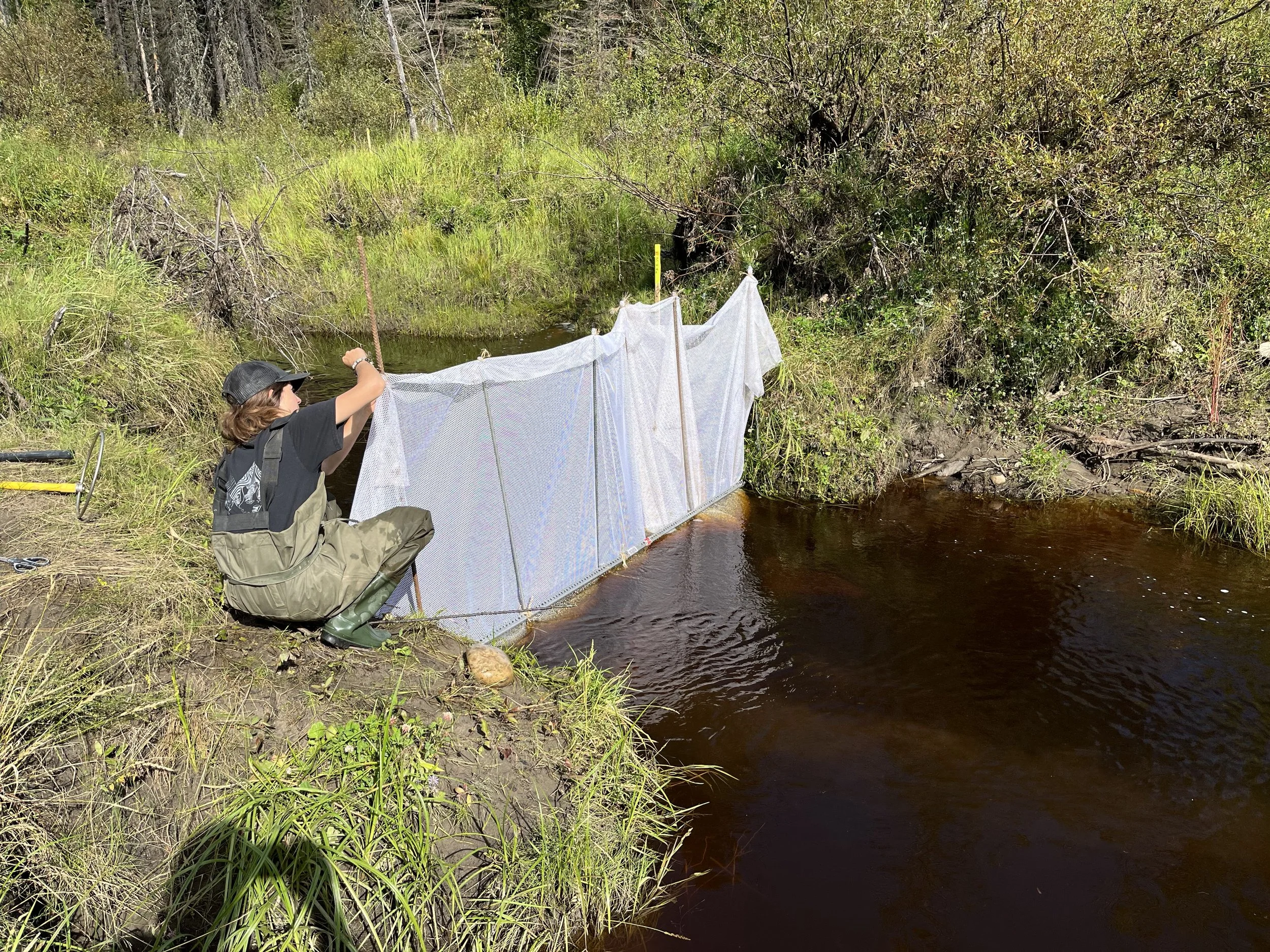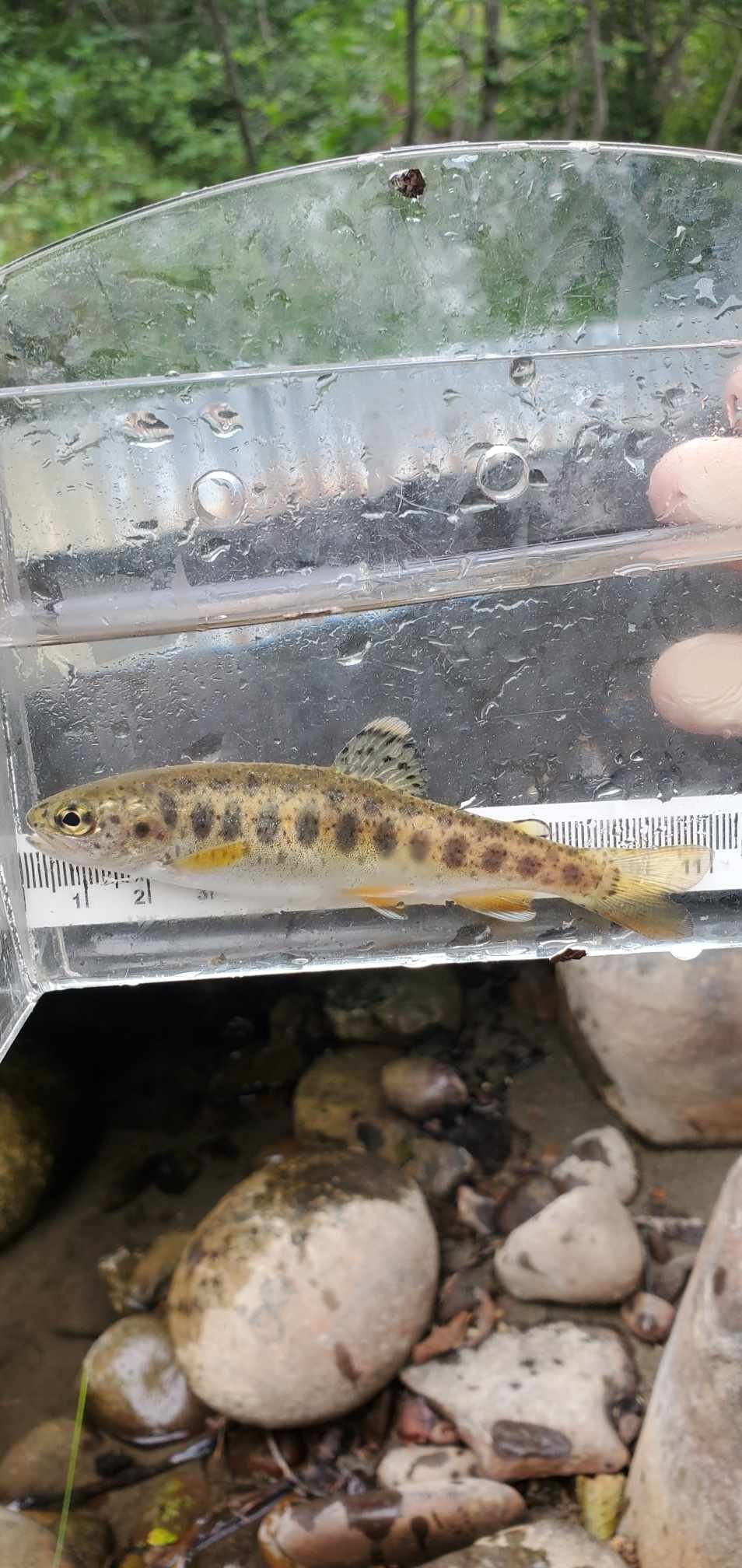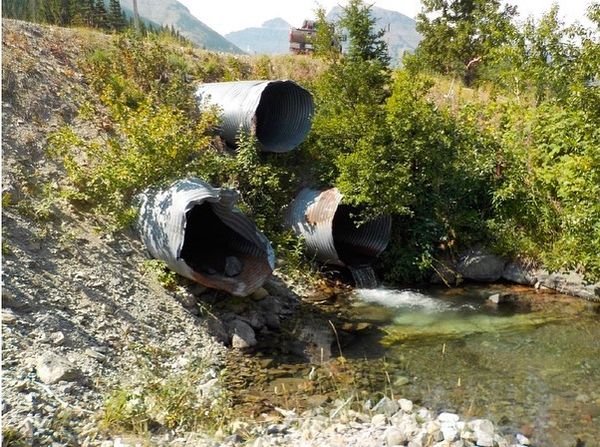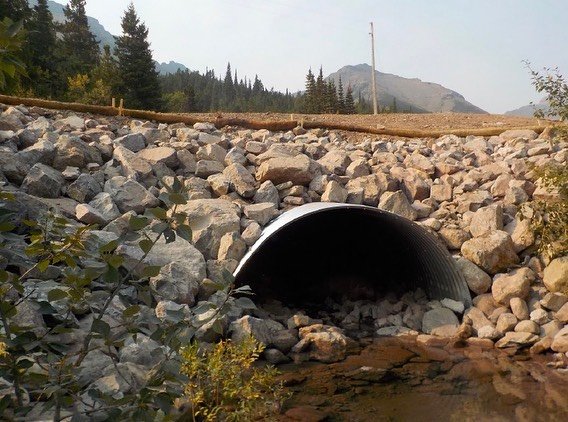Blog Post - Fish Salvage
A BASIC STEP BY STEP GUIDE
Construction season can continue late into the year depending on Restricted Activity Periods (RAP) so frozen streams are broken open. Here a pump is dewatering the work zone.
FISH ISOLATION AND SALVAGE
Fish and their habitat are our first priority. During construction, our job is to mitigate adverse effects to their wellbeing while instream works occur. Every site is different and sometimes requires creative thinking—perhaps there is too much water from high rains, for example—so different methods like diversion channels are an option. But here we will go over one common approach: a full isolation and fish salvage.
STEP 1
FISH HERD AND SET UP THE NETS
Ever heard of fish herding? It doesn’t sound very scientific, but it’s actually a research based method. In basic terms, fish herding is a combination of techniques used to guide fish downstream. Our first step is to walk through the channel, either with multiple people covering bank to bank, or with one person moving in a sweeping pattern. It’s effective and non-invasive.
An exclusion net is first set up upstream of the works using rebar and cloth netting. The rebar is pounded into the substrate for stability and then rocks can be added along the bottom of the net to ensure no fish slip through.
A downstream net will be set up once all efforts have been made to usher fish out of the work zone.
STEP 2
ELECTROFISH
Once the fish exclusion zone has been established, we use a three-pass electrofishing method. Typically, electrofishing permits allow for one pass to minimize the stress to fish, however, a construction site places importance on moving all fish out of the work zone.
A fish salvage requires two to three people: the backpack operator and one or two people to net. Before electrofishing, two people will use a seine net to guide fish downstream. But in the case of a scour pool of this size, sometimes you need all the help you can get!
Note: electrofishing requires a Fish Research License. If the watercourse is in mapped critical habitat, a Species at Risk (SARA) permit is also needed.
All of our Aquatic Biologists are trained as Electrofishing Supervisors!
STEP 3
PROCESS AND RELOCATE
This is the fun part! Any fish caught will go into a dark bucket with water and native vegetation until processed.
Small fish can be measured in a clear measuring window (pictured below left) and adult trout are measured in a slightly scooped ruler (pictured below right). We record individual species— paying particular attention to Species at Risk— for fork length and weight in grams.
After fish are processed, they’re moved downstream outside of the exclusion nets.
Some common species caught this way have been: rainbow, brook, and bull trout, arctic grayling, burbot, and minnows!
Step 4
MONITOR
Salvages require a multi-step process to safeguard wellbeing of aquatic life. If any fish are stranded after herding, setting up nets, and electrofishing, our Biologists will catch them in this stage.
Monitoring takes place when the work zone is ready to be de-watered by pump, which also has a fish screen. As the water level lowers, missed fish can become stranded in small pools; this is where we stand by with nets. Any fish caught will go through the same processing and relocating procedure as above.
Secondly, turbidity monitoring measures for sedimentation influxes in the water during instream works. We take a baseline measurement and when the threshold is reached, construction will halt until turbid waters are flushed by fresh, clear water.
From Beginning to End
Above is an example of reconnecting fragmented fish habitat. This upgrade from three hanging culverts to an open bottom arch will keep the aquatic landscape connected for years to come.
To see more work like this, follow the Foothills Stream Crossing Partnership (FSCP). The FSCP works to remediate fish passage barriers across Alberta, which are prioritized based on mapped critical habitat, listed SARA species, and amount of upstream habitat.









